مقدمة

In the cinema, we are always attracted by the shocking pictures and realistic special effects.
But have you ever thought that the future cinema viewing experience will become more immersive? So, are cinemas really ready for naked-eye 3D LED displays?
جدول المحتويات
1. What is a "naked-eye 3D LED display screen"?
Naked-eye 3D LED display screen, in simple terms, is a display screen that can show three-dimensional images without wearing 3D glasses.
It uses the visual characteristics of the human eye and some special technical means to make the picture on the screen look like it “jumps out” and has a strong sense of three-dimensionality.
This kind of display screen is often used outdoors, such as at the entrance of a مركز تجاري, in a square, or on a landmark building, to attract the attention of passers-by and show cool advertisements or visual effects.
1). The basic principle of naked-eye 3D technology
The core of naked-eye 3D technology is to use the fact that our two eyes see different things.
Because there is a distance between the eyes, the pictures seen by the left eye and the right eye will be a little different. When the brain combines these two pictures, it feels a three-dimensional sense.
2). The naked eye 3D display screen achieves this effect through the following methods:
2.1). Parallax barrier:
Add a layer of something like a fence in front of the screen, so that the left eye and the right eye can see different pictures. Once the brain processes it, there will be a sense of three-dimensionality.
2.2). Column lens:
Attach a layer of lens like a magnifying glass to the screen. These lenses will divide the picture into two parts, left and right, so that the eyes can see different images, thus producing a 3D effect.
2.3). Time multiplexing:
The screen quickly switches between the pictures of the left eye and the right eye.
Because the human eye has the characteristic of “visual persistence”, the brain will synthesize them into a three-dimensional picture.
3). The difference between naked eye 3D LED and ordinary LED
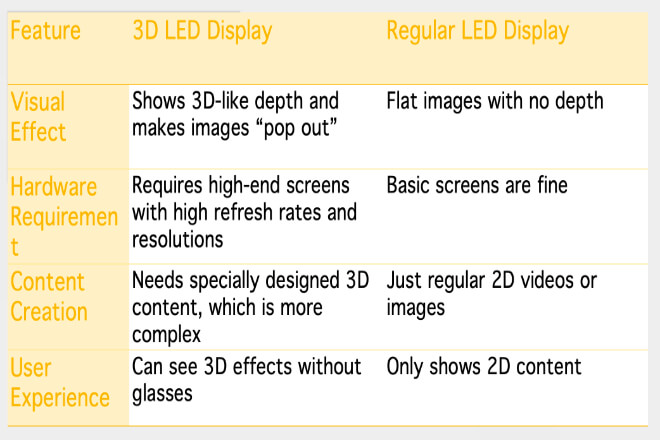
2. What are the existing forms of LED screens used in cinemas?
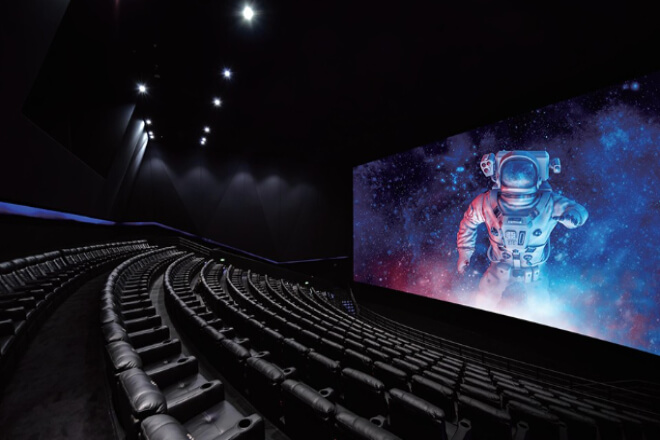
1). LED cinema screens that replace traditional projection screens
Now, some cinemas have begun to use LED screens to replace traditional projection screens.
This kind of LED screen has high سطوع and clear picture quality, which can present more realistic pictures and make the audience more comfortable.
For example, in some cinema halls or projection rooms, a large LED screen is used to play movies directly, with bright colors and smooth pictures, which is much better than traditional projection.
Moreover, this screen can also support higher frame rate playback, making action movies look smoother.
2). Application of LED display screens in cinema halls and waiting areas
In addition to projection rooms, LED screens can often be seen in cinema halls or waiting areas.
These screens are generally used to play movie trailers, advertisements, or display information on cinema activity.
For example, as soon as you walk into the cinema hall, you can see a large LED screen with a scrolling playback of upcoming movie trailers or cinema membership discounts to attract your attention.
This screen not only increases the sense of technology in the cinema, but also allows the audience to learn more interesting content while waiting for the movie to start.
3). Advantages of high سطوع and high contrast in cinemas
The brightness and contrast of LED screens are very high, which is one of their major advantages.
Simply put, high brightness means that the picture can be seen clearly in a bright environment, and will not be easily affected by ambient light like traditional projection.
High contrast can make the black of the picture darker, the white whiter, and the details richer.
For example, in some dark scenes of movies, LED screens can better show shadows and details, allowing the audience to see more clearly.
Moreover, this kind of screen can also reduce eye fatigue, so you won’t feel so tired after watching movies for a long time.
3. Does the cinema have the hardware foundation to realize naked-eye 3D?
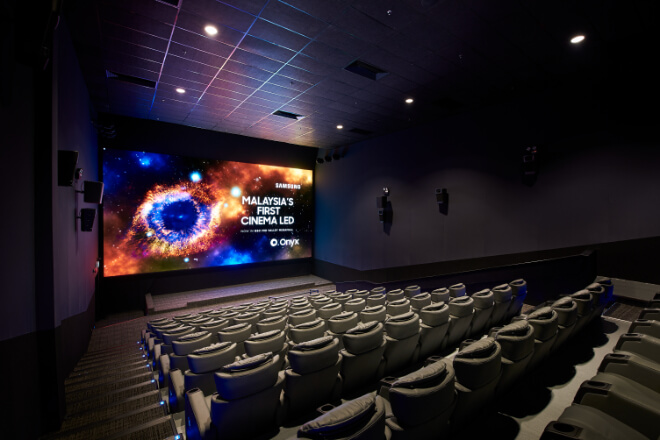
The LED screens in cinemas are usually large in size, which is an important basis for realizing naked-eye 3D.
Large screens can enhance the audience’s sense of immersion and make the 3D effect more obvious.
For example, the width of the LED screens in some cinemas can reach more than 10 meters, and the height can also be several meters. This size is enough for the audience to feel a strong sense of three-dimensionality.
The large screen allows the audience’s field of vision to be completely occupied by the picture, thereby better deceiving the brain and producing a 3D effect.
ال دقة of the LED display is one of the key factors affecting the naked-eye 3D effect.
LED screens in cinemas usually support high resolution, such as 4K (3840×2160) or even 8K (7680×4320).
High resolution can ensure clear details of the picture and reduce jaggedness and blur.
For naked-eye 3D, high resolution can better present the parallax images of the left and right eyes, making the stereoscopic effect more realistic.
For example, an 8K resolution LED screen can provide more pixels, making the details of the picture richer and further enhancing the 3D effect.
The naked-eye 3D effect requires a high معدل التحديث and a fast response speed to avoid flickering and smearing.
LED screens in cinemas usually have a high refresh rate, which can reach 120Hz or even higher.
A high refresh rate can ensure the smoothness of the picture and reduce visual fatigue.
At the same time, the response speed of LED display screens is very fast, usually below 1ms, which means there is almost no delay when switching between pictures.
Which can better support the fast switching requirements of naked-eye 3D.
The arrangement of the lamp beads of the LED display screen is the key to achieving naked-eye 3D.
Naked-eye 3D technology requires a special arrangement of lamp beads to guide light so that the left and right eyes see different images, thus creating a sense of three-dimensionality.
The LED screen in the cinema can achieve a lamp bead arrangement suitable for parallax design in the following ways:
4.1). Column lens technology:
A layer of column lenses is covered on the surface of the LED screen. These lenses can refract light in different directions, so that the left and right eyes receive different images respectively.
This technology requires precise lamp bead arrangement and lens design to ensure the clarity and three-dimensionality of the image.
4.2). Parallax barrier technology:
By adding a parallax barrier (such as a slit grating) to the surface of the LED screen, the screen is divided into multiple parallax channels, so that the left and right eyes see different pictures.
This technology also requires precise lamp bead arrangement to ensure the accuracy of the parallax effect.
4. Is it necessary to have "viewing angle control" to achieve a naked-eye 3D effect established in the cinema?
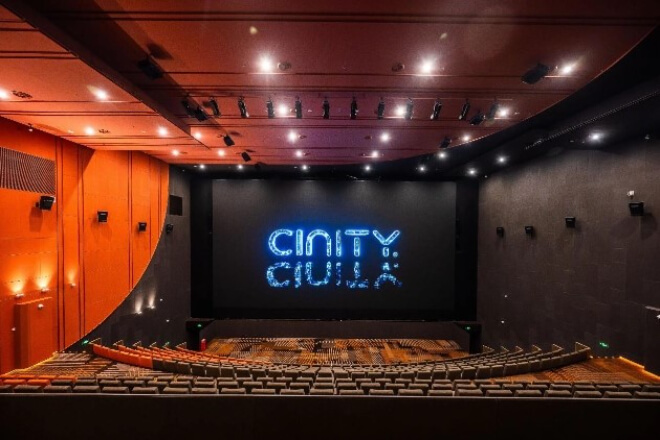
1). Multi-viewing angle vs. fixed زاوية الرؤية
The core of naked eye 3D technology is to achieve a stereoscopic effect through viewing angle control.
The current naked eye 3D technology is mainly divided into single-viewing angle and multi-viewing angle:
1.1). Single-viewing angle:
Traditional naked eye 3D technology (such as parallax barrier or lenticular lens technology) usually only supports the 3D effect of a single viewing angle.
This means that the audience needs to sit in a specific position to see the best 3D effect.
1.2). Multi-viewing angle:
With the advancement of technology, some new naked eye 3D technologies (such as light field display technology) can support multi-viewing angles.
This technology generates multiple parallax images, allowing the audience to see the stereoscopic effect in different positions.
2). Can the audience sitting in different positions see the same 3D effect?
Traditional naked eye 3D technology has viewing angle limitations. If the audience deviates from the best viewing area, the 3D effect will be greatly reduced, and even ghosting or blurring may occur.
However, the latest light field display technology has been able to significantly expand the viewing angle range and support a wider range of viewing angles.
For example, some advanced naked-eye 3D display screens can achieve a viewing angle range of more than 120 degrees, allowing viewers to see clear 3D effects at different positions.
3). The problem of “golden viewing area” limitation
The “golden viewing area” refers to the area where viewers can get the best 3D effect.
Traditional naked-eye 3D technology can usually only provide good 3D effects within a limited viewing angle range, which limits the viewing position of the audience.
For example, some early naked-eye 3D displays require viewers to maintain a specific distance and angle, otherwise the 3D effect will be significantly reduced.
However, with the development of technology, this problem is being improved. For example.
Light field display technology can expand the range of the “golden viewing area” by generating multiple parallax images, allowing more viewers to enjoy high-quality 3D effects.
In addition, some theaters have begun to adopt advanced naked-eye 3D equipment, which can better adapt to the viewing needs of different audiences by optimizing optical design and image processing algorithms.
4). Summary
It is technically feasible for theaters to achieve viewing angle control of naked-eye 3D effects, but the problem of viewing angle limitation needs to be solved.
Traditional naked-eye 3D technology has the limitation of a “golden viewing area”, and the audience needs to sit in a specific position to get the best experience.
However, with the application of emerging technologies such as light field display technology, the viewing angle range is constantly expanding, and multi-viewing is gradually becoming possible.
5. Is it reasonable for theaters to use naked-eye 3D LED?
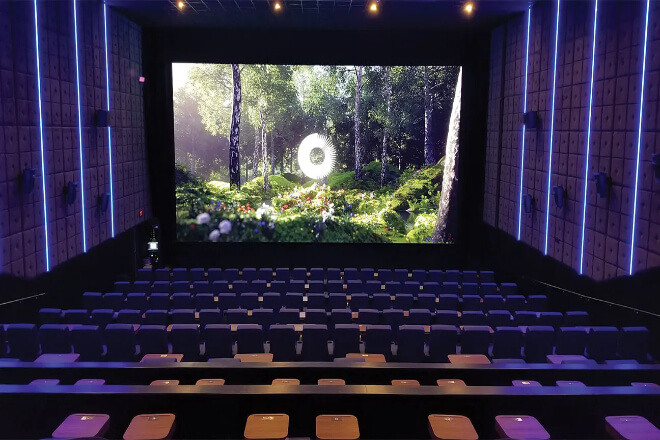
1). Is it suitable for use in trailers and advertising playback areas?
Very suitable. The application of naked-eye 3D LED display screens in trailer and advertising playback areas can significantly enhance the audience’s attention and interest.
Its realistic 3D effect can instantly attract the audience’s attention and enhance the attractiveness and memory points of advertisements and trailers.
For example, some theaters have set up naked-eye 3D LED screens in the lobby or waiting area to play movie trailers and advertisements, and the effect is very significant.
In addition, naked-eye 3D LED screens do not require wearing 3D glasses, avoiding visual fatigue and discomfort caused by traditional 3D technology, and the audience can watch the content more comfortably.
The high brightness and high contrast of this screen also enable it to present excellent results in bright environments.
2). Is it suitable for playing the whole movie?
Not suitable at present. Although naked-eye 3D LED technology is constantly improving, it still faces some challenges in playing the whole movie:
2.1). Viewing angle limitation:
Naked-eye 3D technology still has viewing angle limitations. The audience needs to sit in a specific “golden viewing area” to get the best 3D effect.
If the audience deviates from this area, the 3D effect will be greatly reduced.
2.2). Visual fatigue:
Watching 3D content for a long time may cause visual fatigue and even symptoms such as dizziness and nausea.
This is because 3D display technology requires the audience’s eyes to constantly adjust the focus and parallax, and long-term viewing will increase the burden on the eyes.
2.3). Content adaptation:
Most movie content is not currently made specifically for naked-eye 3D LED screens, and additional optimization and processing are required to achieve the ideal 3D effect.
3). Will it cause visual fatigue to the audience?
There is a risk. Although naked-eye 3D technology reduces the discomfort caused by traditional 3D glasses to a certain extent, watching 3D content for a long time may still cause visual fatigue.
This is because 3D display technology requires the audience’s eyes to constantly adjust the focus and parallax, and long-term viewing will increase the burden on the eyes.
However, some advanced naked-eye 3D technologies (such as light field display technology) are working hard to solve this problem by optimizing parallax design and image processing algorithms to reduce visual fatigue.
6. الخاتمة
Naked-eye 3D LED display undoubtedly brings new possibilities to cinemas. It not only enhances the appeal of trailers and advertisements, but also may completely change the way we watch movies.
However, the maturity of technology and the actual experience of the audience are still the focus we need to pay attention to.
Although the application of naked-eye 3D LED screens in cinemas still faces some challenges.
With the continuous advancement of technology, we have reason to believe that the viewing experience in cinemas in the future will be more exciting.
أخيرًا، إذا كنت تريد معرفة المزيد عن شاشات LED، يرجى الحصول على اتصال معنا.
